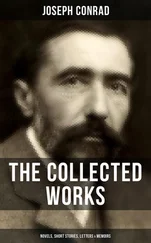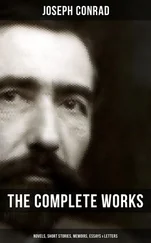Paxton’s magazine provides a snapshot of the contemporary horticultural world. The first issue included remarks on new modes of glazing, on the materials to be used for hothouse roofs and on how to alter the colour of hydrangeas or retard the blooming season for common English and French roses. There is a description of how to force vines in pots by the gardener at Willersley Castle, Derbyshire, and the first reprint of an article from the Gardener’s Magazine . Catholic in its coverage, driven partly by Paxton’s own preoccupations, the magazine eclipsed its rivals and was immediately successful.
It brought Paxton head to head with Loudon who realised that his publication was, for the first time, facing serious competition. Piqued, the brilliant monomaniac set out on a tour of northern and Midland estates. The next issue of the Gardener’s Magazine carried a stinging criticism of Chatsworth which ‘has always appeared to us an unsatisfactory place’. He disapproved of the square pile of building, its situation and the scattering of its waterworks. He recommended the cascade steps should be transformed into a waterfall, railed against the gravel on the walks and offered only one morsel of praise – that the Duke allowed the waters to be played to any visitor without exception. Loudon reserved his sharpest barb for Paxton himself, lambasting the kitchen garden for including ornamental plants, ragged box edging and wooden ranges of forcing houses. He went on to say that he had ‘since learned that Mr Paxton disapproves of metallic houses and of heating by hot water; and here we are not sorry that this is the case, because the public will have an opportunity of judging between his productions and those of other first-rate gardens where metallic houses and hot water alone are employed’. He was referring to Woburn, Syon and Bretton Hall in a way designed to inflame Paxton, who was not at home during the visit. It was a possibly impulsive, certainly tactless and arrogant censure from a man plagued by pain and illness and entirely devoted to the maturation of horticulture into a professional science. *
Paxton was still a little known quantity, but his riposte showed his mettle and left Loudon in little doubt that he was not for bullying. Such public disapproval, timed just as his own patron was particularly attentive to activity in the gardens, and which also attacked the very house and grounds of which they were so proud, would have shaken a less resilient man. The sting came not from an anonymous contributor, but from the most famously trenchant of horticultural authors and journalists, the greatest garden innovator and designer of the early nineteenth century.
In the third issue of the Horticultural Register , Paxton was the model of restraint and measure, but his reply to Loudon was no less vigorous. ‘A person might almost conjecture that Mr Loudon came with a predetermination to find fault, if not it must be because he did not give himself the time to consider before he wrote his ideas of what he terms improvements.’ He questioned Loudon’s taste and he took issue with him for failing to even enter the house, from where the gardens should be viewed. He pointed out that, while at least two of the glasshouses in the kitchen garden were heated by hot water, the method was generally uneconomical in the severe winters of Derbyshire where fires warmed more consistently and needed less attention.
Paxton drew his line in the sand over Loudon’s criticisms of his preference for wood over metal in glasshouse construction. They not only admitted as much light as if they were built of metal, he said, but they provided a combination of strength, durability and lightness, honed to a more perfect balance than had ever been achieved previously in wooden ranges. In addition, his wooden ranges had cost less than a third of the price of metal ones. Finally, Paxton questioned the judgement and the veracity of the older man. He reproved: ‘did you not say to the young man who accompanied you round, that Chatsworth was altogether the finest place you had ever seen in your travels? How then is it that Chatsworth is so unsatisfactory a place?’ It was an able and finely-judged deflection. Sharp-minded Sarah, acutely judgemental herself, would have cheered the confident rebuttals of her husband.
The Horticultural Register continued to prosper, gaining sales over Loudon’s magazine. Occasionally, Loudon would try to prick the confidence of his young competitor who would reply with restrained sarcasm, but on the whole the magazines continued in successful parallel and later the two men would come to a rapprochement. Some time in 1832, Paxton’s partner in the venture, Joseph Harrison, quit the magazine and the editorship devolved wholly on Paxton. He continued to contribute articles on a variety of subjects from the tiniest detail of plant qualities, to the characteristics of large groupings of plants and the chemistry of soil, a living embodiment of his belief that gardeners should know not only the names of plants but the detail of their structure, their habit and peculiarities in order to understand the requirements of heat, soil and nutrition. Through his own writing he began to formulate and consolidate his own aesthetic and horticultural theories.
In June 1832, the Reform Bill – perhaps the most important piece of early nineteenth century legislation – was finally passed, to great general exultation. In one strike it increased by 50 per cent the number of people eligible to vote. The changes in the wider world hardly touched Chatsworth, however, where Paxton concentrated on the conversion of the beautiful old stone greenhouse, built in 1697, into a stove. He added a new glass roof, remodelled the interior to form terraces on which plants were placed in pots, included a basin for aquatic plants, and modernised the heating equipment to include four furnaces whose flues passed into the back wall of the house. The heat from the fires circulated through iron grates in the front path and via a hot air cavity round each of the front basins. The venerable old building was reborn, and the Duke was delighted. ‘My new stove is the loveliest thing I ever saw, done entirely by Paxton.’
Once the alteration was complete, Paxton worked on designs for a new parterre to be laid out in front of it, planted with bulbs and plants to give colour almost throughout the year, edged with rhododendrons and box hedges. Cut out of the grass were square and semicircular beds and two long beds in which moss roses were layered over the surface, dotted with half-standard perpetual roses rising above them. The transformation in the gardens was widely noted, nowhere more so than in letters to the Duke. Lady Southampton was typical in her praise, finding herself ‘enchanted’ and ‘delighted’. The Duke’s niece, Blanche, thought that it ‘surpassed anything I ever saw’.
On 18 October, the Duke’s recently decorated new dining room was used for the first time in rehearsal for its first royal visit. The following day, the young Princess Victoria and her mother, the Duchess of Kent, arrived as part of a tour of the great English estates. Victoria was thirteen; it was her first ‘grown-up’ dinner and the house was gleaming and opulent in its new finery. The future queen planted an oak, her mother a chestnut, in the west garden, and in the evening there were charades.
Paxton had been planning and his men had been arranging his first coup de théâtre . All the waterworks in the park were illuminated with coloured Bengal lights which were changed between each act. Even the Duke had never seen anything like it. First, the fountains glowed red, but when the group returned to the windows the gardens were bathed in blue ‘moonlight’; then the cascade appeared to turn to fire, and rockets went up in every direction. The 13-year-old and all her party were enchanted. While they slept, hundreds of garden labourers worked through the cold October night to return the gardens to their immaculate perfection so that, by the morning, there was not even a trace of autumn leaves on any of the paths. When the Princess moved on the following Monday to Sheffield, fireworks again awaited her, but the Duke was adamant that they came nowhere near the effects of Paxton’s illuminations of water and fire.
Читать дальше











